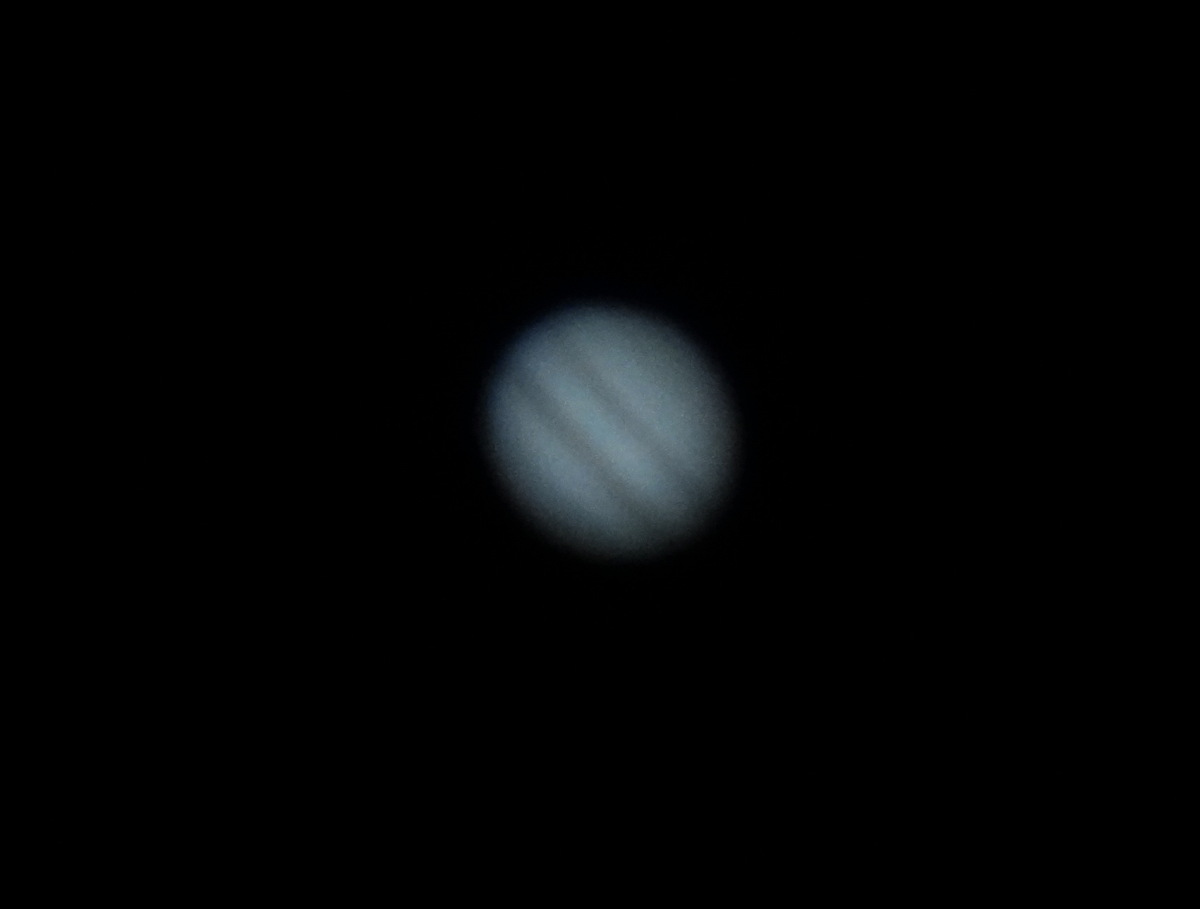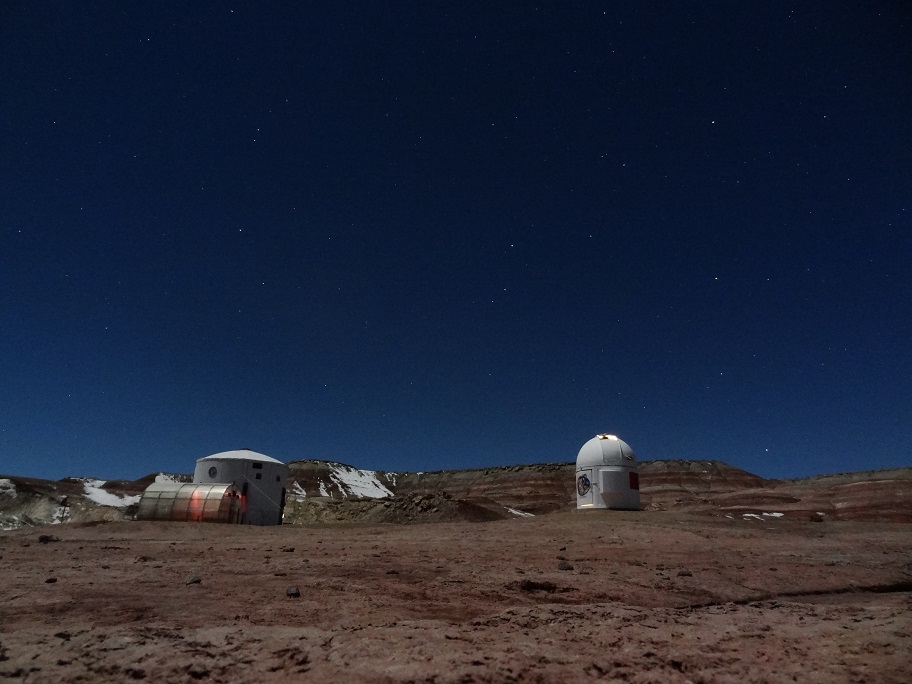Mock Mars Mission: Stunning Night Sky Shines Over Utah Outpost

Editor's Note: In the Utah desert, scientists are attempting to recreate what a real-life mission to Mars might be like, and SPACE.com contributor Elizabeth Howell is along for the ride. Here's her latest dispatch.
HANKSVILLE, Utah — In the desert here, the nearly full moon was so bright that we didn't even need a flashlight to walk to the Mars Desert Research Station Musk Observatory. The stars were still, as the dry air did not provide much humidity to cause twinkling.
About 100 feet away from our Habitat, two crew members had captured (the Andromeda Galaxy M31) in the telescope at the Mars Society observatory, which is a tiny room just barely big enough to fit a crew of five or six. They eagerly gestured me, and a few others, to take a look. Even in the light of the moon, you could still see the smudge of the galaxy located some 2 million light-years from Earth.
In turn, we each requested targets. The Pleiades. The moon. Jupiter. The Celestron 14-inch CGE1400 telescope is programmable, requiring one only to scroll through a menu for these major targets. Crew astronomer Pedro Diaz-Rubin talked about his plans to watch the occultations of Jupiter's moons in future days. [Mock Mars Mission Photos: Life on a Simulated Red Planet]
While the telescope is just of a moderate size, the conditions around MDRS are perfect for observing. The nearest town (Hanksville) is small and about 8 miles (13 kilometers) away, meaning we have no light pollution to contend with.
I'm not a serious astronomer in any sense, but to see stars steadily shining at the horizon, and a full Milky Way on nights when the moon is not shining, is far different from what I'm used to in my hometown of Ottawa.
Crew 133 engineer Joseph Jessup also set up a radio telescope just outside of the observatory last week, which has provided us with great views of activity around Jupiter's system. I've been told the telescope has been picking up flares on Io, Jupiter's large volcanic moon.
Breaking space news, the latest updates on rocket launches, skywatching events and more!
Elizabeth Howell is completing a two-week simulation at the Mars Society's Mars Desert Research Station from Jan. 4 to 19. Have a burning question about the mission or a picture you really would like to see from the site? E-mail contact@elizabethhowell.ca for the chance to get your question answered in a future story.
Follow Elizabeth Howell @howellspace, or SPACE.com @Spacedotcom. We're also on Facebook and Google+. Original article on SPACE.com.

Elizabeth Howell (she/her), Ph.D., was a staff writer in the spaceflight channel between 2022 and 2024 specializing in Canadian space news. She was contributing writer for Space.com for 10 years from 2012 to 2024. Elizabeth's reporting includes multiple exclusives with the White House, leading world coverage about a lost-and-found space tomato on the International Space Station, witnessing five human spaceflight launches on two continents, flying parabolic, working inside a spacesuit, and participating in a simulated Mars mission. Her latest book, "Why Am I Taller?" (ECW Press, 2022) is co-written with astronaut Dave Williams.


